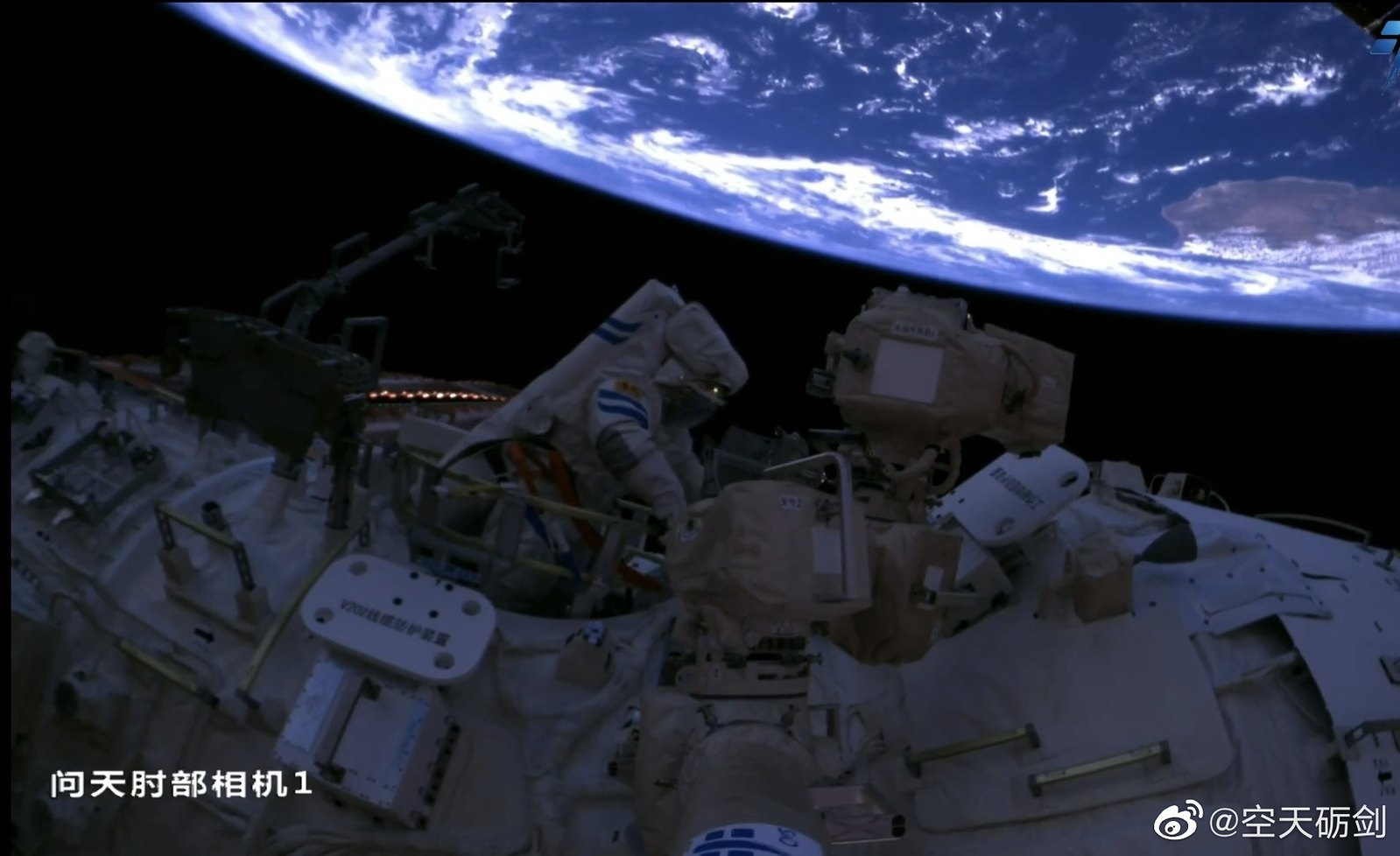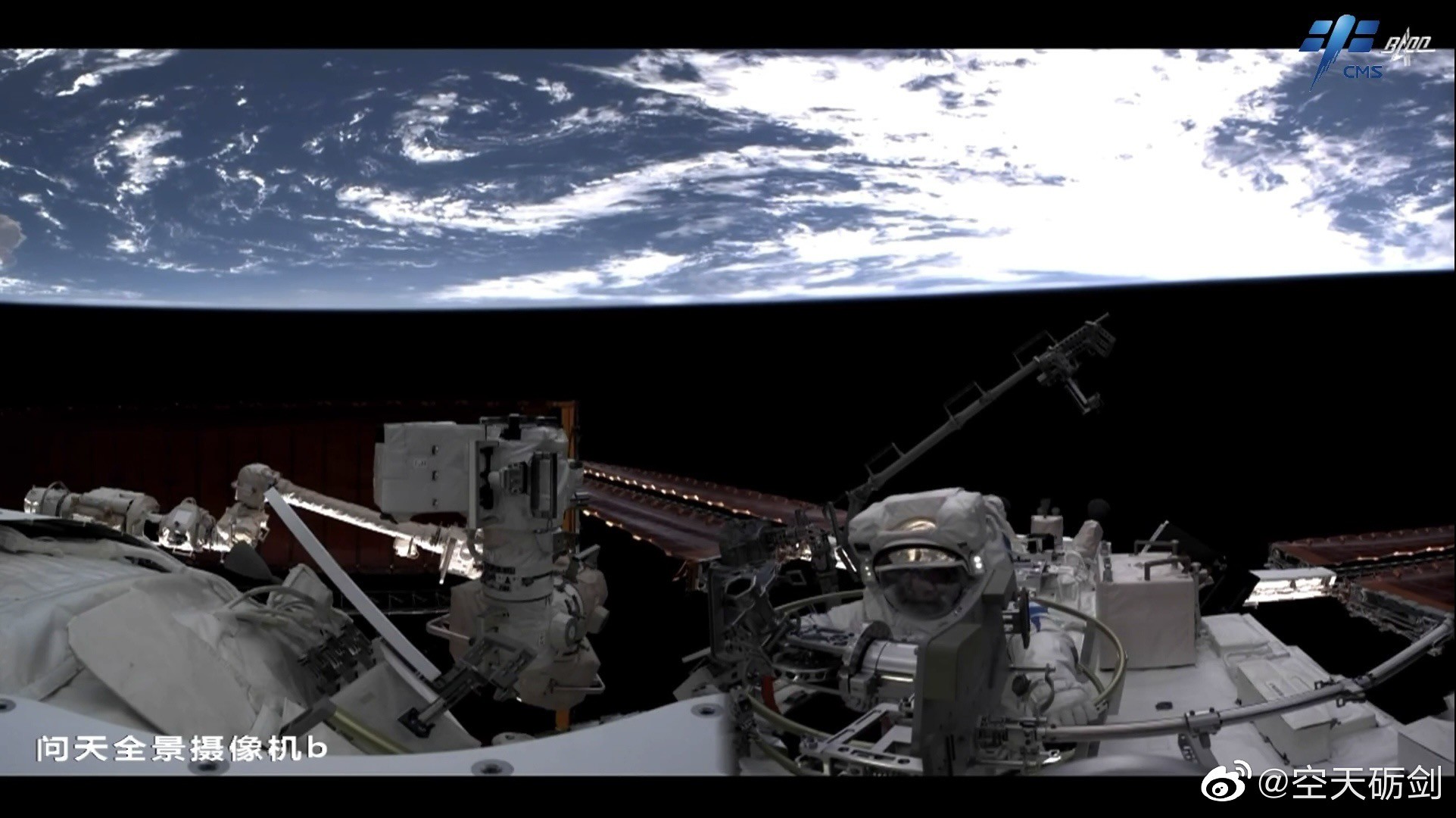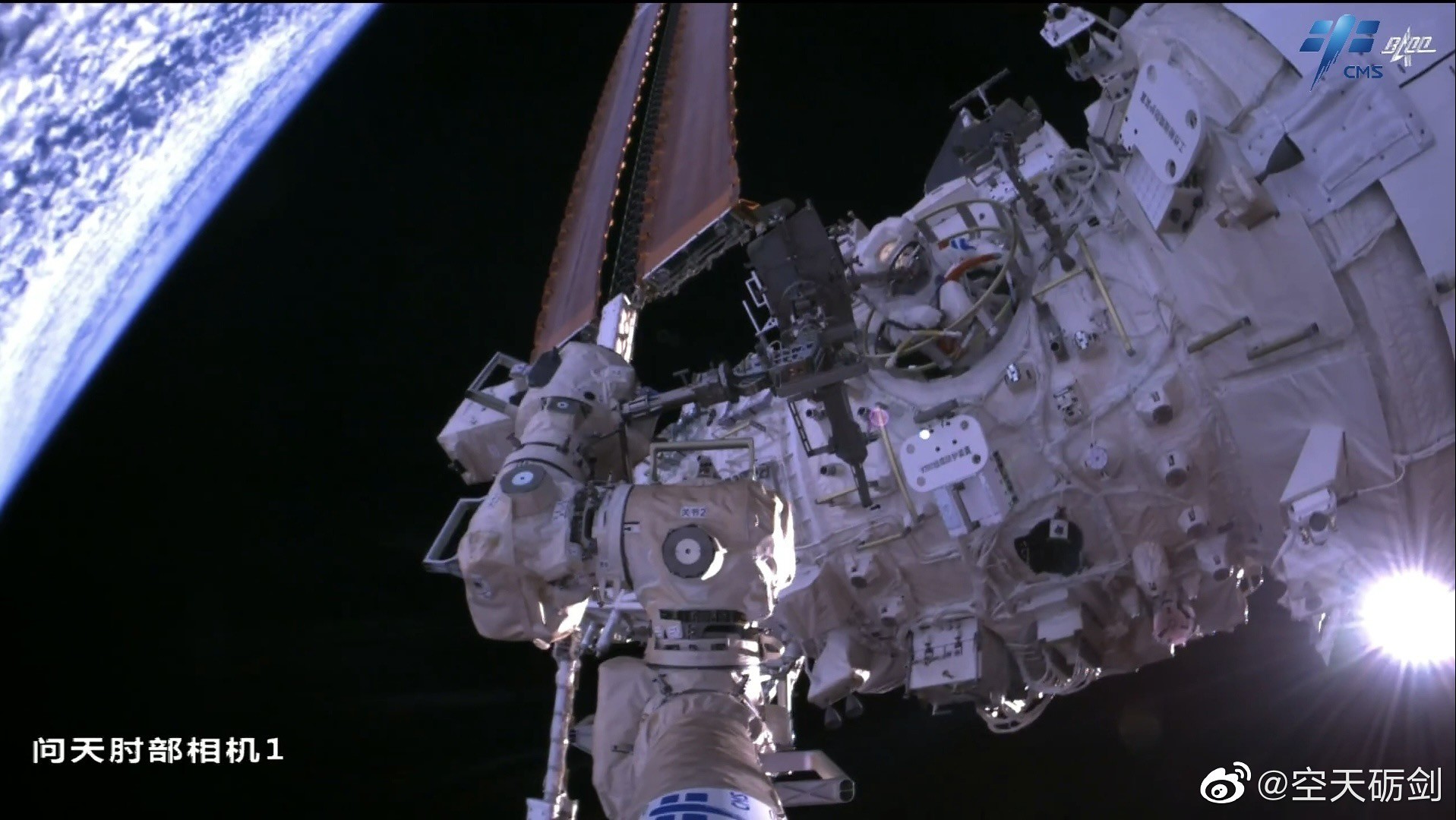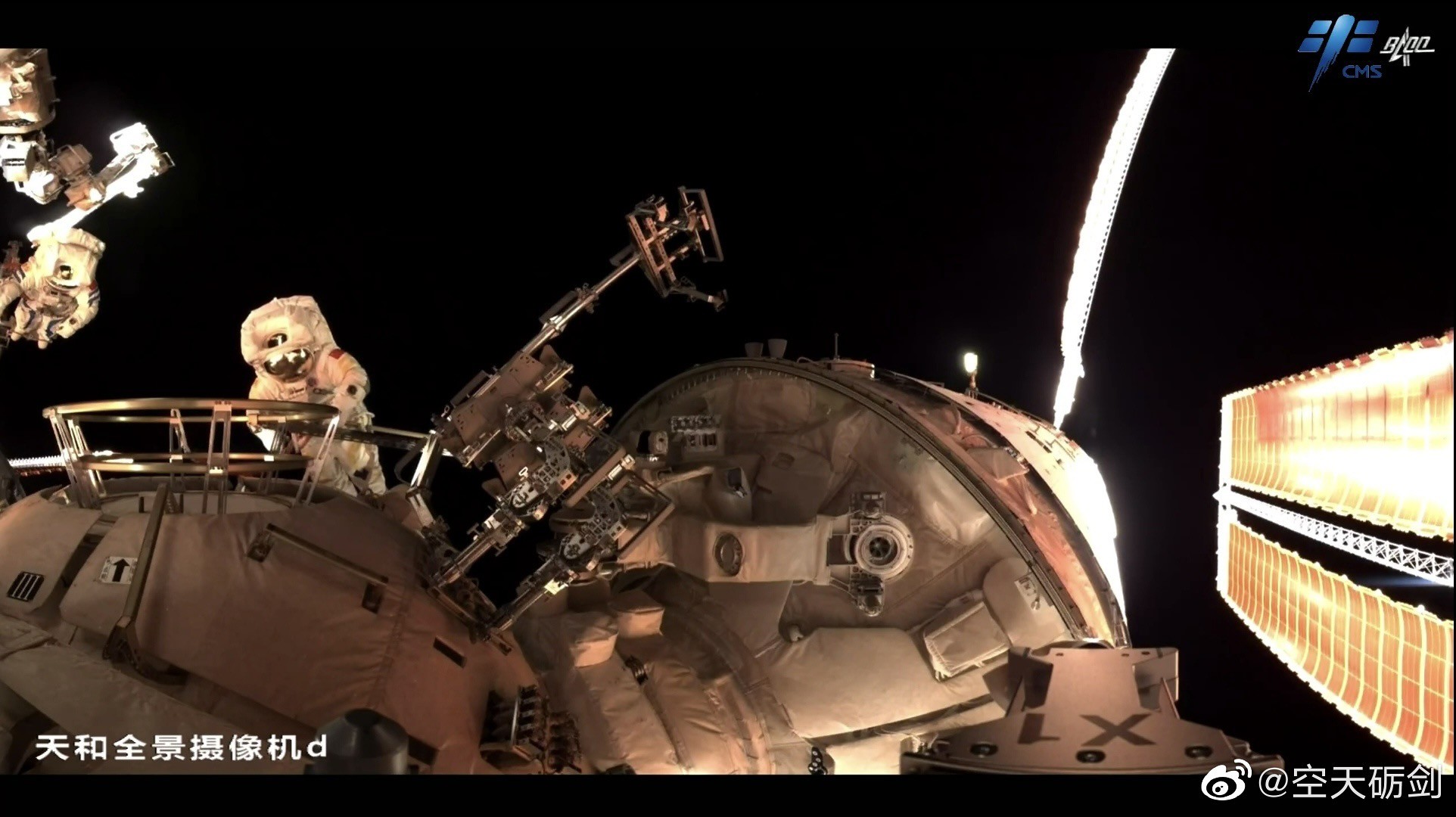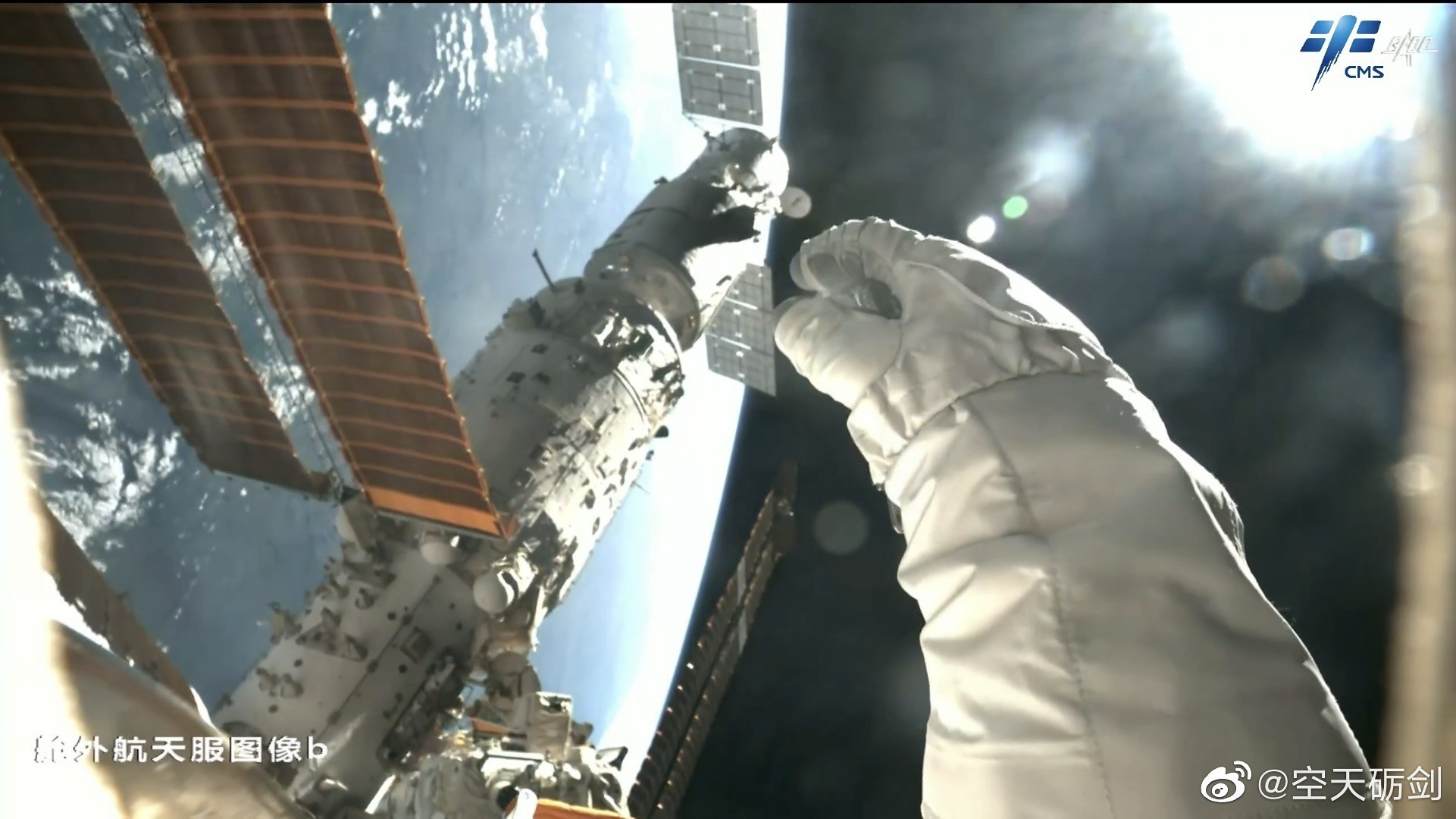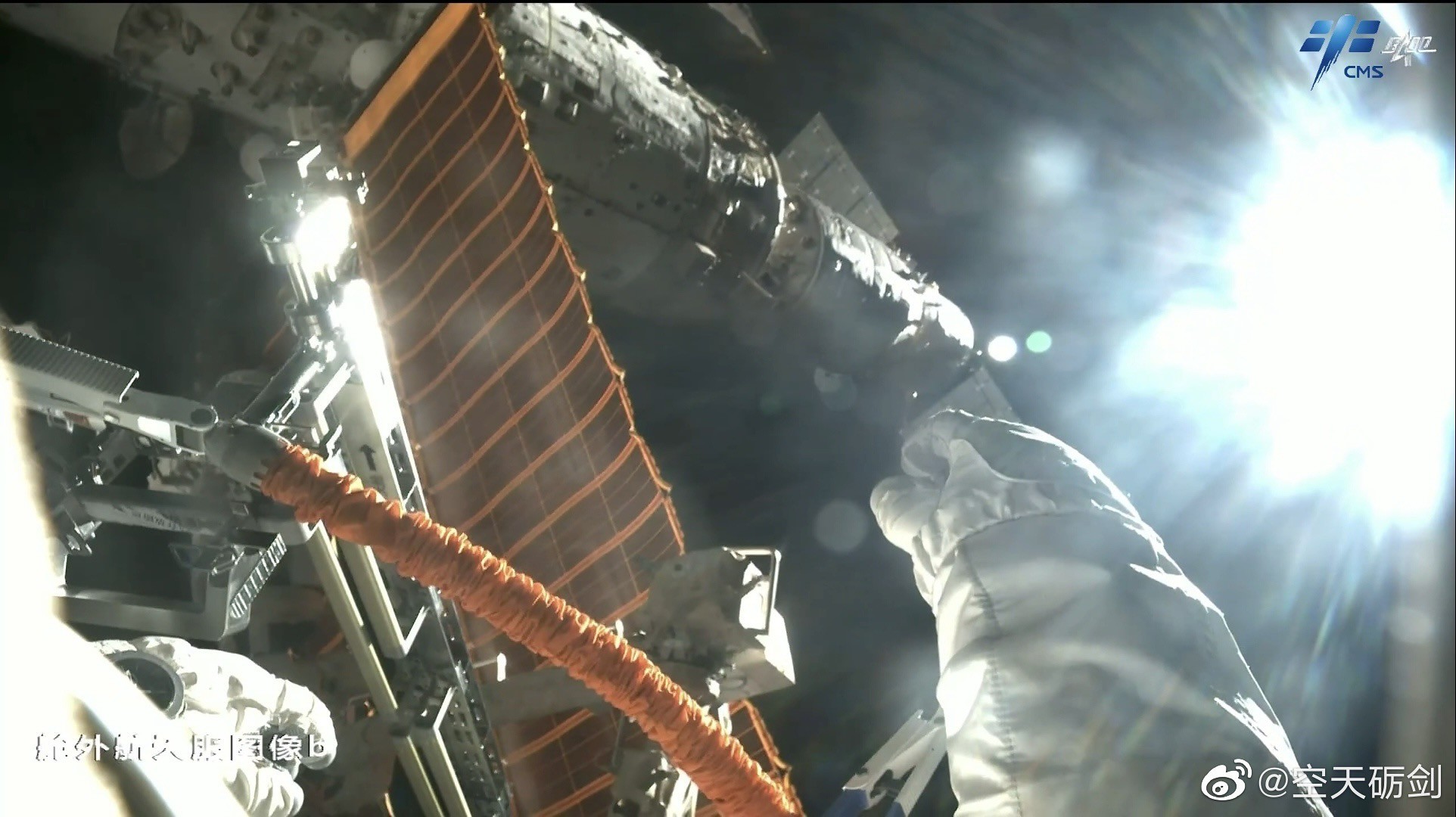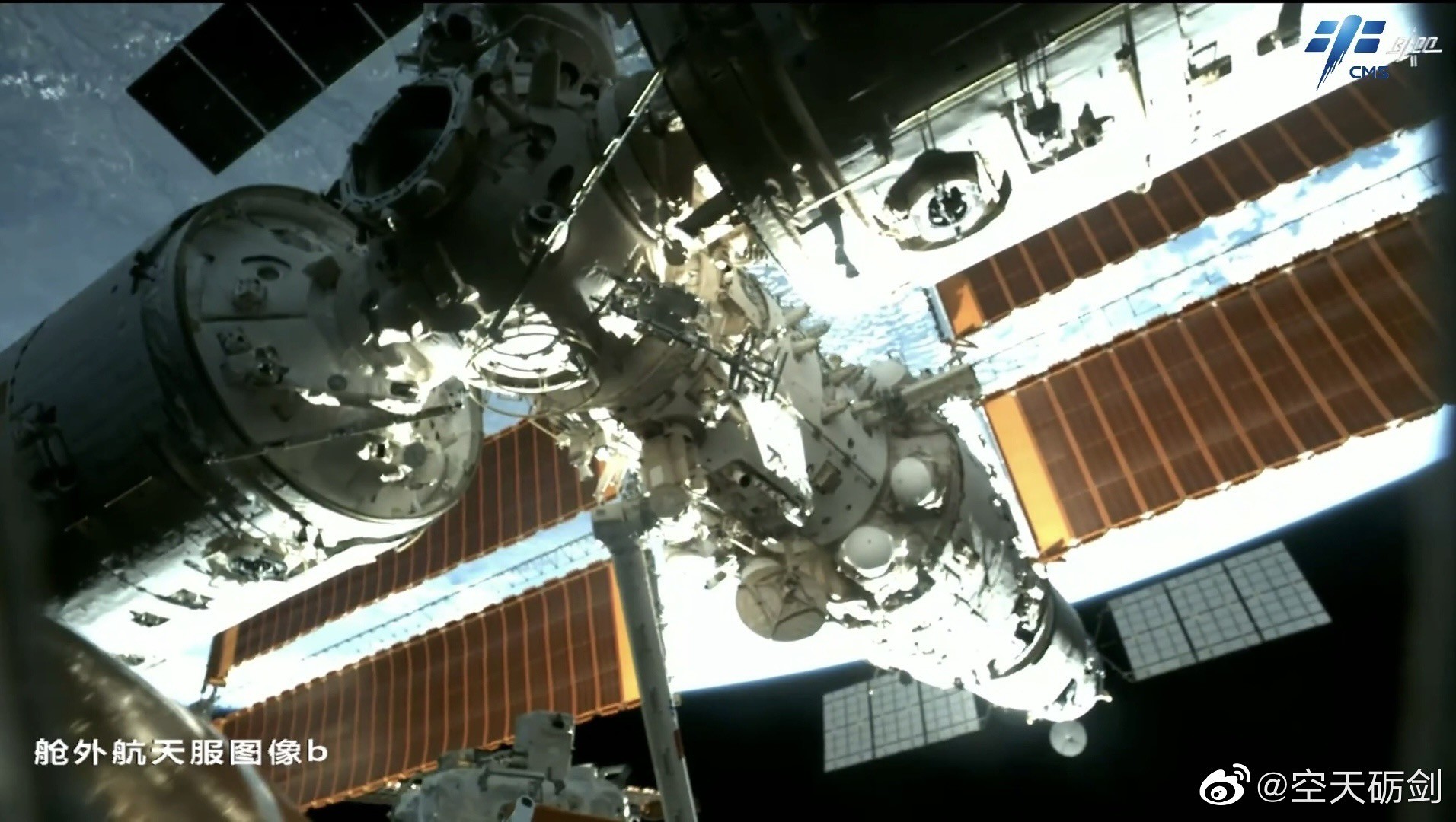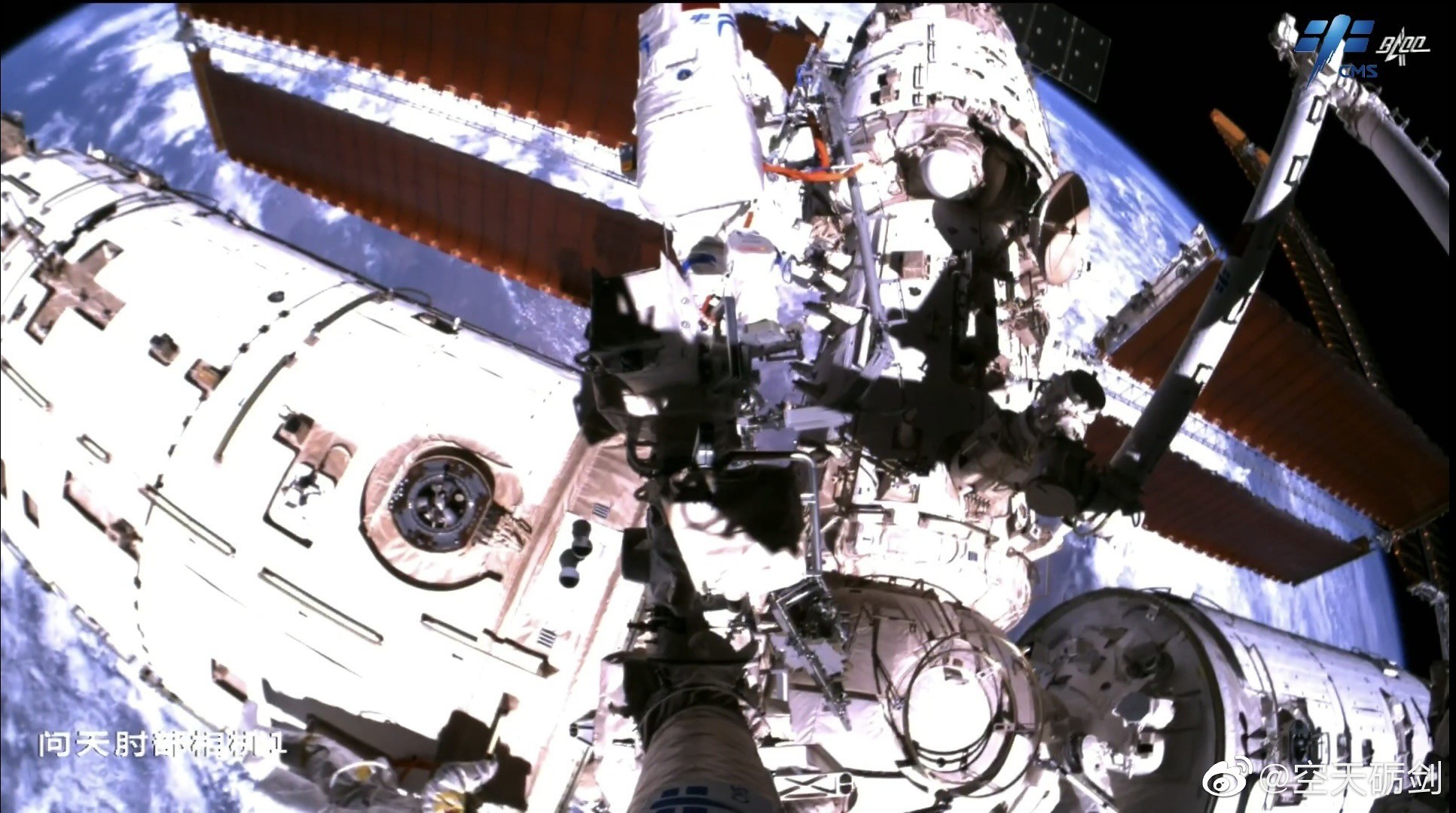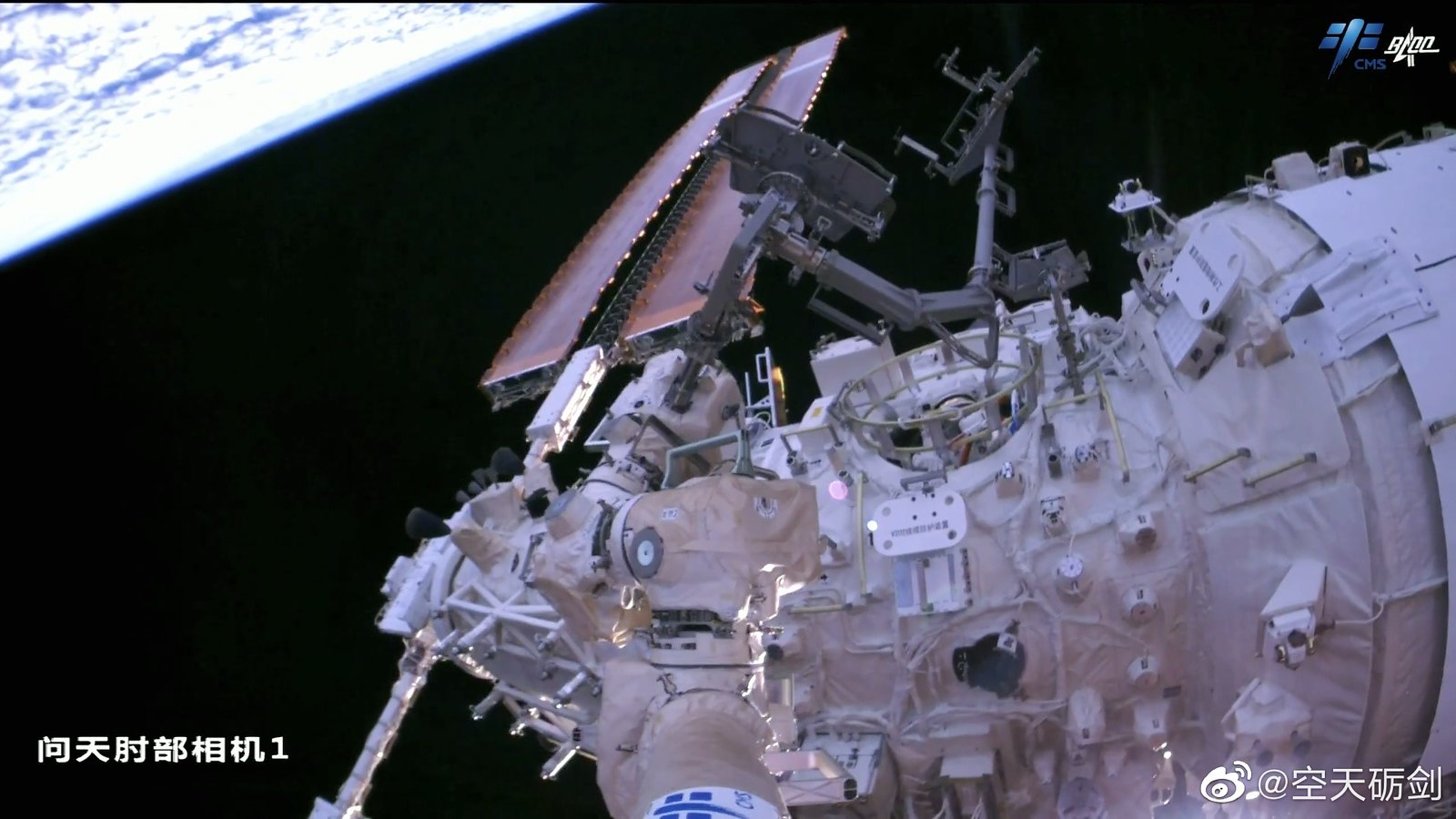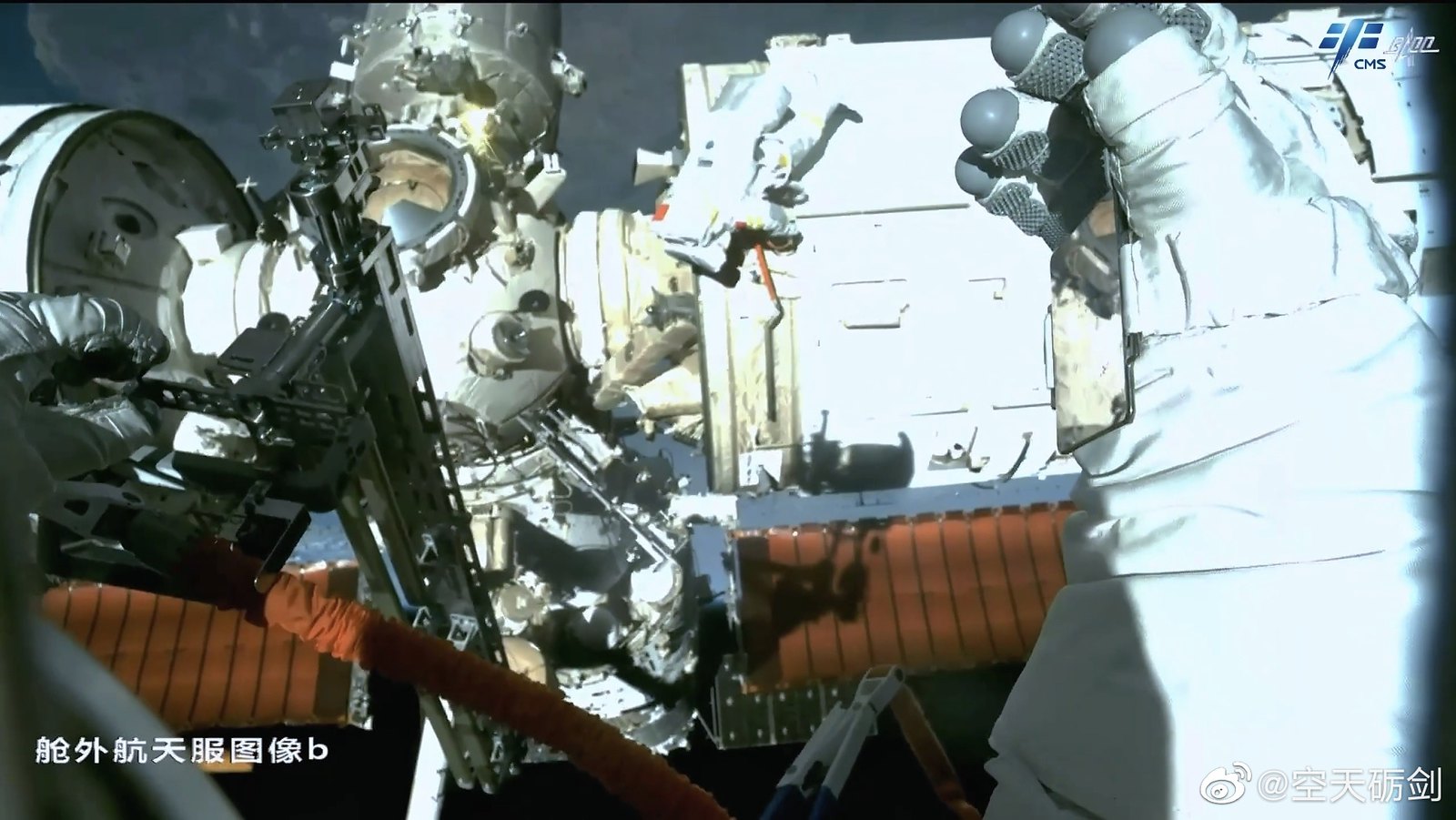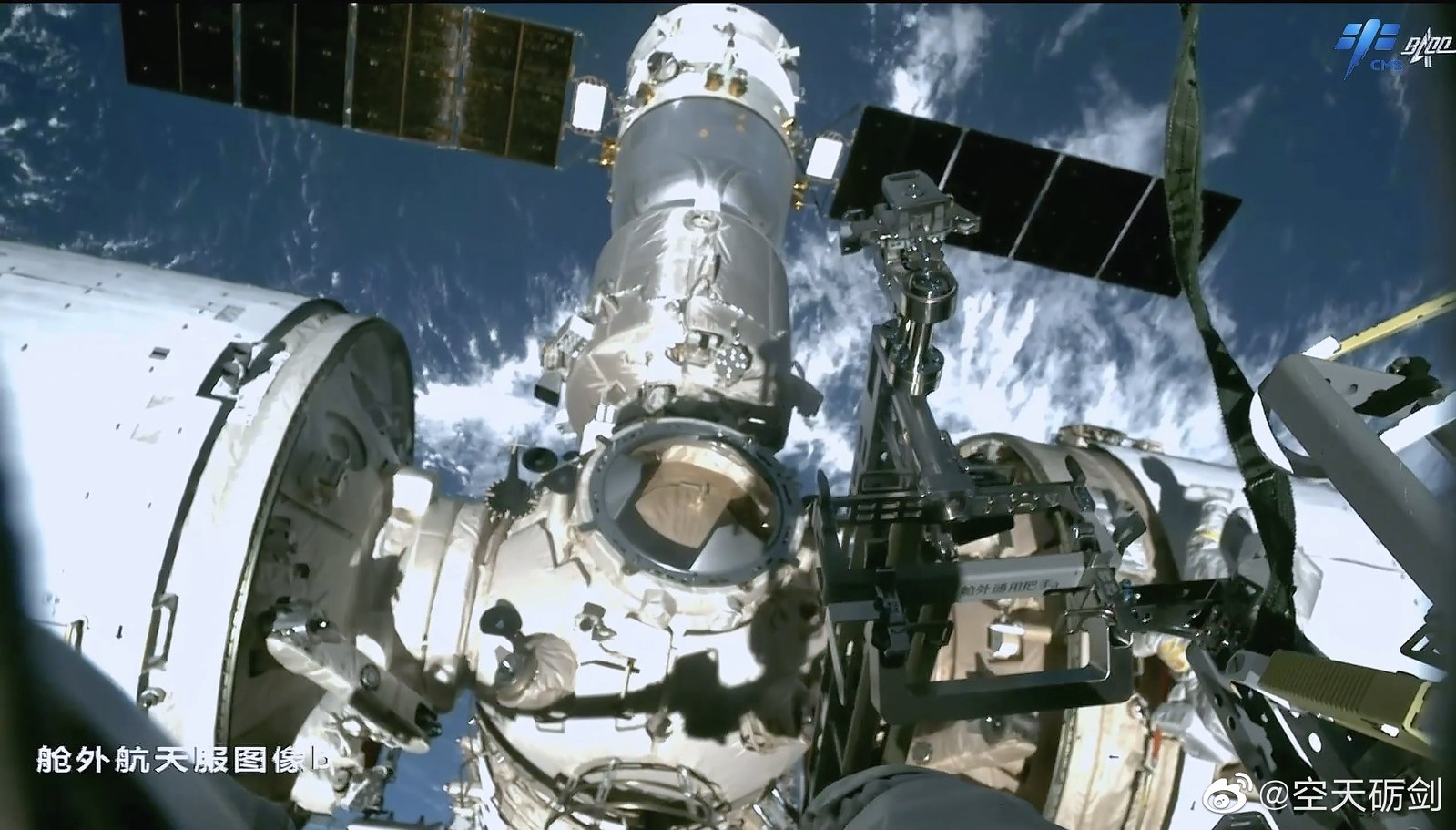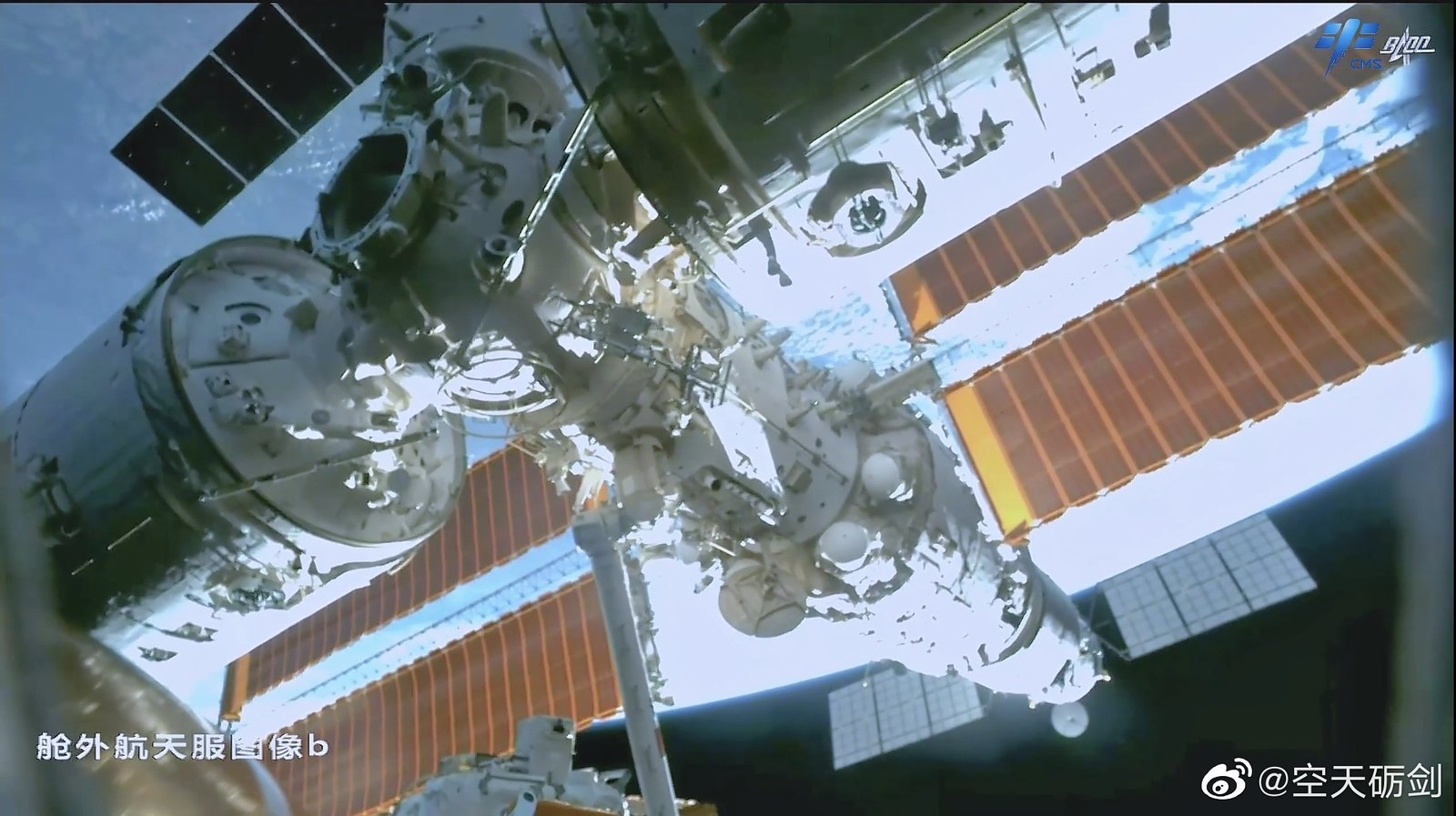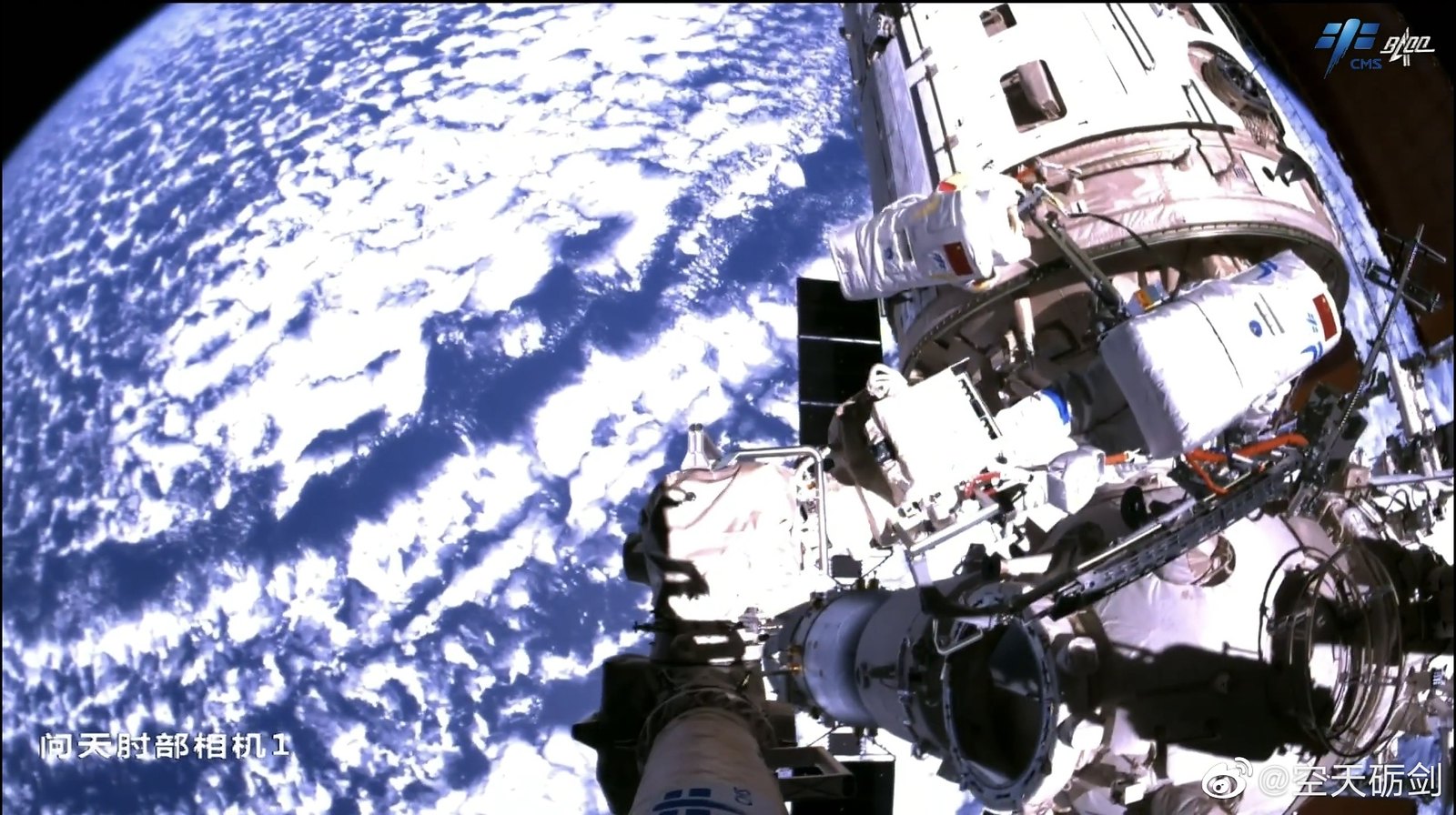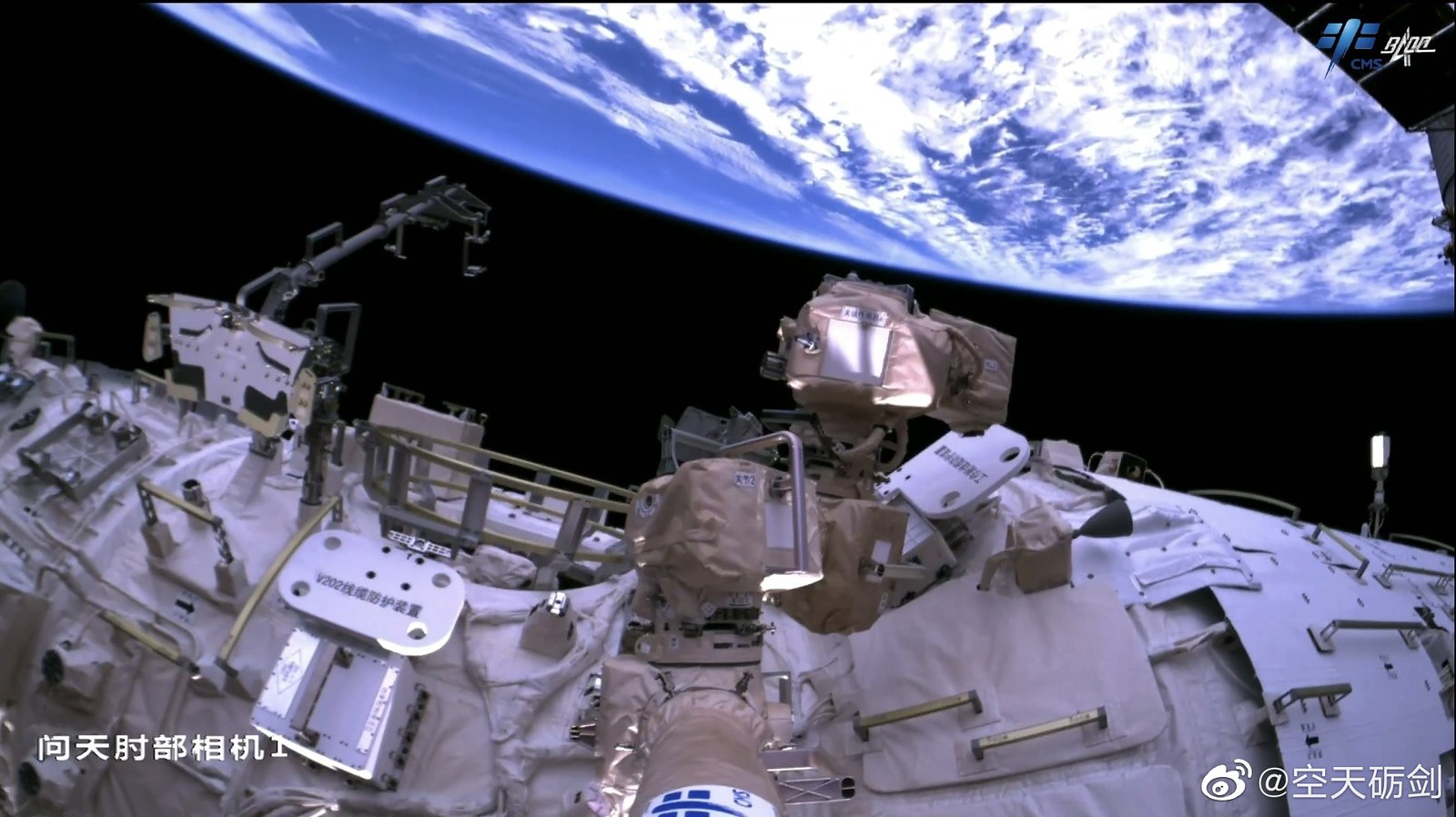You are using an out of date browser. It may not display this or other websites correctly.
You should upgrade or use an alternative browser.
You should upgrade or use an alternative browser.
China's Space Program Thread II
- Thread starter Blitzo
- Start date
The paper has your answer:What could be the possible advantage of landing horizontally vs vertically?
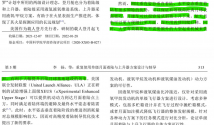
- Useful payload is closer to the moon surface
- Easier for rover to drive down a ramp.
- Astronaut can easily walk down to the surface instead of climbing a ladder.
- Large cargo does not need crane to unload, easier for future moon base construction.
That is one doubt that many people including myself have about Starship being the moon lander for Artemis, theoretically doable but impractical or unnecessarily complicated. It is like landing a skyscraper.For a very large lander, landing vertically means you need to climb down a very tall ladder to get on the ground. Things become impractical.
View attachment 102063
Different proposals for Apollo lander, including early direct ascent profile (no docking in lunar orbit). Notice one of them is so damn tall that it has a crane for moving people and stuff up and down the vehicle.
For the giant direct ascent lunar modules NASA themselves considered horizontal landing:
View attachment 102064
曾航:马斯克是如何实现5年降100倍成本的?
霍亮:实际上在制造和材料工艺这些相关的东西上,它的迭代和进展是很缓慢的。所以马斯克在这个领域中它所用的一个方式就是刚才讲的叫批量化的制造和工艺的革新。我们都知道在制造领域有个浴盆曲线,就是当制造的产量达到一定数量的时候,成本会出现迅速的降低,并且可靠性和稳定性会相对得到提升。
所以我们看到它的猎鹰九号火箭和星舰火箭,它最大量使用的就是它的发动机产品,比如说它现在的猛禽发动机 12 个小时一台,一年能够达到比如说按照 365 天就 700 台的产量,这对于火箭发动机来讲已经是很大的一个量,所以它通过批量化制造的方式来一定程度上降低了成本。并且通过工艺和材料的变化,比如说他使用不锈钢的这种材料来制造“星舰”等等,从而能够降低了成本,这也是刚才提到的一个非常重要的方式。
但是其实我们看到:它在制造,起码在火箭这个领域它还没有使用到这种工艺和技术。不像特斯拉,比如特斯拉他做了压铸岛,他用整体的这个铝合金压铸件来生产汽车的底盘和汽车的壳体等等。(在火箭制造上)现在主要的情况是它在制造工艺方面基本上还是大量沿用传统的工艺,只是采用了批量化制造的方法。但是在猛禽发动机的研发过程中,它是开发了新的高温合金,(并且同时使用了)现在高温的材料、以及使用了比如说我们所熟知的不锈钢来制造这个箭体的结构。
杨峰:其实马斯克的所有的方法我觉得都非常非常好,都值得学习。但是有一个点我觉得一定不能够忽视:马斯克最大的成就就是从火箭历史上来看,SpaceX是最成功的火箭公司,但他也是失败次数最多的公司。他的成功是在他众多的失败当中迭代出来的。他非常大胆的创新,然后非常大胆的去失败,然后去迭代获得教训和经验,然后再去打补丁升级,然后小步快跑、快速迭代把这个东西干出来。所以在这种情况下,他所有的那些方法最终才能够实现,但是在我们的文化里边是不容忍失败的。
但我其实很同意这个观点,就是跟行业的成熟度很有关系。马斯克在做SpaceX刚开始发现他其实也想找这些供应商,甚至想买一个成熟的火箭,先把卫星打上去,后来发现特别贵。然后发现如果这么打的话是不可能赚钱的。所以他自己就想,做发动机本来也是想买发动机,然后发现如果买发动机也赚不了钱,那后面就自己组建了一个发动机的团队。
曾航:但是我听说马斯克搞的那个叫 oneweb 卫星工厂现在的产量已经实现了一个星期有几十颗卫星的,他好像是用了很多汽车流水线的这个生产的方式用来用到航天上面,我觉得这个很恐怖,一个星期几十颗卫星。
杨峰:我觉得火箭跟卫星本来是两种不同形态的产品。所以从火箭工厂的角度上来说,我觉得未来的火箭的批量化生产可能就跟这种飞机的批量化生产会是差不多,天津有那个空客 320 的厂,我去参观过,我说那挺好。那么从卫星的角度上来说,未来可能会更像是汽车的这种产能。因为卫星本来的量就会比火箭要大很多。
但是我觉得现在国内有一个很严重的误区,这是我个人的观点,不一定正确。我个人认为是一个很严重的误区,就是大家都看到了马斯克的星链工厂和你刚刚说的OneWeb 的卫星工厂,觉得这个好高级。所以我们国家的卫星能力都是没问题的。那么只是我们的批量化生产水平不行。
所以我们现在赶紧的要建卫星工厂,无论在哪个城市,那反正要把一个超大的像汽车生产线一样的这种大工厂建起来,然后搞进去很多的机器人,机械臂,各种花里胡哨的东西,这样的工厂我见了好几个。但是我想说的是真能一步到位做到这个情况吗?就是卫星你的产品的定义都没有做好,你的迭代过程还没有开始,你的卫星上去之后,要不就成本过高,要不就是可靠性不行对吧?在这个阶段,你就一下上量,去建个那么大的工厂,你真有那么多成熟的卫星可以去制造吗?然后你对卫星的需求到了你需要去生产那么多卫星的时候吗?所以从我的角度上来说,我觉得我没有看到任何现在国内的一个卫星工厂真的能够如我们所想象的那样用起来的。
所以其实从我的角度上来说,我们自己的方式就是一个远景的一个目标,的确未来会成为那样。但是现阶段我们就一直把卫星工厂当作我们卫星的一个产品一样在进行设计和制造。比如说我们在2016 年2017 年 最早的阶段的时候,这个都不能叫卫星工厂,就是一个小作坊。那么大家就在里边就造那个很小的科研卫星。
那么怎么样能够把成本省下来,怎么样能把这个东西干出来,我们觉得这才是最重要的。那么到 2019 年之后,我们开始做我们的 2.0 版本的这个卫星工厂,那么就开始把之前所积累下来的一些经验教训,然后去迭代了一个版本的卫星工厂。然后后来我们开始做SAR了,然后又开始在这个 2.0 版本的基础之上再去打补丁,修修补补来增加一些东西,然后按照这种流水线化的方式,来尝试着来干我们的卫星工厂。
在2021 年的时候,那么我们在绵阳建了我们的 3.0 版本的卫星工厂,那么这个面积更大了,设计的更加的符合我们现在的需求了,但是这个离远景的那个还是有很长的距离。所以我觉得不仅仅卫星的产品需要迭代,卫星工厂我们作为一个产品他也需要去迭代。这是我觉得我个人坚持的一个观点。
Zeng Hang: How did Musk achieve a 100-fold cost reduction in 5 years?
Huo Liang: In fact, in terms of manufacturing and material technology, its iteration and progress are very slow. So one of the methods Musk uses in this field is the batch manufacturing and process innovation just mentioned. We all know that there is a bathtub curve in the manufacturing field, that is, when the manufacturing output reaches a certain amount, the cost will decrease rapidly, and the reliability and stability will be relatively improved.
So we see its Falcon 9 rocket and Starship rocket. Its engine products are used the most. For example, its current Raptor engine is produced every 12 hours, which can reach, for example, 365 days a year. The output of 700 units is already a large amount for rocket engines, so it reduces the cost to a certain extent through mass manufacturing. And through changes in technology and materials, for example, he used stainless steel to manufacture "starships", etc., which can reduce costs, which is also a very important way just mentioned.
But in fact, we have seen that it is being manufactured, at least in the field of rockets, it has not yet used this kind of craftsmanship and technology. Unlike Tesla, for example, Tesla made a die-casting island, and he used the whole aluminum alloy die-casting to produce the chassis of the car and the shell of the car. (In rocket manufacturing) The main situation now is that it basically follows the traditional technology in a large number of manufacturing processes, but adopts the method of mass production. However, during the R&D process of the Raptor engine, it developed a new high-temperature alloy, (and used at the same time) the current high-temperature materials, and used, for example, the well-known stainless steel to manufacture the structure of the arrow body.
Yang Feng: In fact, I think all the methods of Musk are very, very good, and they are all worth learning. But there is one point that I think must not be ignored: Musk’s greatest achievement is that in the history of rocketry, SpaceX is the most successful rocket company, but it is also the company with the most failures. His success is iterated out of his many failures. He innovated very boldly, then failed very boldly, then iterated to gain lessons and experience, then patched and upgraded, and then ran in small steps and iterated quickly to get this thing out. So in this case, all of his methods can be realized in the end, but failure is not tolerated in our culture.
But I actually agree with this point of view, that is, it has a lot to do with the maturity of the industry. When Musk started working on SpaceX, he discovered that he actually wanted to find these suppliers, and even wanted to buy a full-fledged rocket to launch the satellite first, but later found that it was very expensive. Then I found out that it is impossible to make money if I play like this. So he thought to himself, originally he wanted to buy an engine to make an engine, and then found that if he couldn't make money buying an engine, he formed an engine team himself.
Zeng Hang: But I heard that the oneweb satellite factory run by Musk is now producing dozens of satellites a week. He seems to use a lot of automobile assembly lines for aerospace production. , I think this is scary, dozens of satellites a week.
Yang Feng: I think rockets and satellites are originally two different products. So from the perspective of the rocket factory, I think the mass production of rockets in the future may be similar to the mass production of this kind of aircraft. There is an Airbus 320 factory in Tianjin. I visited it, and I said it was pretty good. it is good. So from the perspective of satellites, the future may be more like the production capacity of cars. Because the original volume of the satellite will be much larger than that of the rocket.
But I think there is a very serious misunderstanding in China now. This is my personal point of view, and it may not be correct. I personally think it is a very serious misunderstanding, that is, everyone has seen Musk's Starlink factory and the OneWeb satellite factory you just mentioned, and think this is very advanced. Therefore, our country's satellite capabilities are no problem. Then it's just that our mass production level is not good.
So now we are rushing to build a satellite factory. No matter which city we are in, we have to build a super-large factory like a car production line, and then put in a lot of robots, mechanical arms, and all kinds of bells and whistles. I have seen several such factories. But what I want to say is can it really be done in one step? That is, the definition of your satellite product is not well done, and your iteration process has not yet started. After your satellite goes up, either the cost is too high, or the reliability is not good, right? At this stage, you just increase the volume at once and build such a large factory. Do you really have so many mature satellites to manufacture? Then your demand for satellites has reached the point where you need to produce so many satellites? So from my point of view, I don't think I have seen any domestic satellite factories that can really be used as we imagined.
So in fact, from my point of view, our own way is a vision and a goal, and indeed it will become that way in the future. But at this stage, we have been designing and manufacturing the satellite factory as a product of our satellite. For example, when we were at the earliest stage in 2016 and 2017, this could not be called a satellite factory, but a small workshop. Then everyone will build that small scientific research satellite inside.
So how to save costs and how to make this thing, we think this is the most important thing. Then after 2019, we started to make our 2.0 version of this satellite factory, then we started to use some of the experience and lessons accumulated before, and then iterated a version of the satellite factory. Then we started to make SAR, and then started to patch on the basis of this 2.0 version, tinkering to add some things, and then tried to do our satellite factory in this pipelined way .
In 2021, we will build our 3.0 satellite factory in Mianyang, which will have a larger area, and the design will better meet our current needs, but there is still a long way to go from the distant one. . So I think not only satellite products need to be iterated, but the satellite factory also needs to be iterated as a product. This is a point of view I think I hold personally.
I think he is underestimating the problems. Actually the design of the Falcon 9 is significantly different from most rockets of its own era. The fuselage is just a sheet of aluminium-lithium welded together. Older rockets like the Delta II used regular aluminium alloys. And rockets of its own era like the Delta IV or Atlas V use isogrid construction. Isogrid construction is way, way, more expensive to build. And this is also what Long March 5 uses. Isogrid. Then you have the gas generator engines the Falcon 9 uses, which are not particularly high performance, but should be a lot cheaper to build and reuse than a staged combustion engine. And then you have the fact they use off the shelf electronics, not space grade ones, and they make them space grade with hardware redundancy and software. All of these changes alone probably make the rocket 2-3 cheaper than a regular one. Once you add mass production, which is easier because of the simple design, then the rocket becomes 20 times cheaper. Add reuse and it might be 50 times cheaper or more.
To me it looks like he does not know the problem well enough. It is not just a matter of producing more. The design is way simpler. Well South Korea already figured out that since Musk could build his Falcon 9 for $100 million USD, then they too can have a successful space program, and they are making a similar launcher when their previous rockets used solid rockets.
To me it looks like he does not know the problem well enough. It is not just a matter of producing more. The design is way simpler. Well South Korea already figured out that since Musk could build his Falcon 9 for $100 million USD, then they too can have a successful space program, and they are making a similar launcher when their previous rockets used solid rockets.
So, this is interesting
Seems like the CZ-9 at Zhuhai had 24 nozzles on the first stage, meaning it likely represents the most recent CZ-9 variant depicted this year by Long Lehao, with 24 x 240t kerolox engines on the first stage.
As I've said multiple times, I think this is the most viable option for developing a reusable architecture CZ-9 in the shortest and lowest risk path, and its presence at Zhuhai suggests to me this seems like the one they've gone with for now.
Seems like the CZ-9 at Zhuhai had 24 nozzles on the first stage, meaning it likely represents the most recent CZ-9 variant depicted this year by Long Lehao, with 24 x 240t kerolox engines on the first stage.
As I've said multiple times, I think this is the most viable option for developing a reusable architecture CZ-9 in the shortest and lowest risk path, and its presence at Zhuhai suggests to me this seems like the one they've gone with for now.





